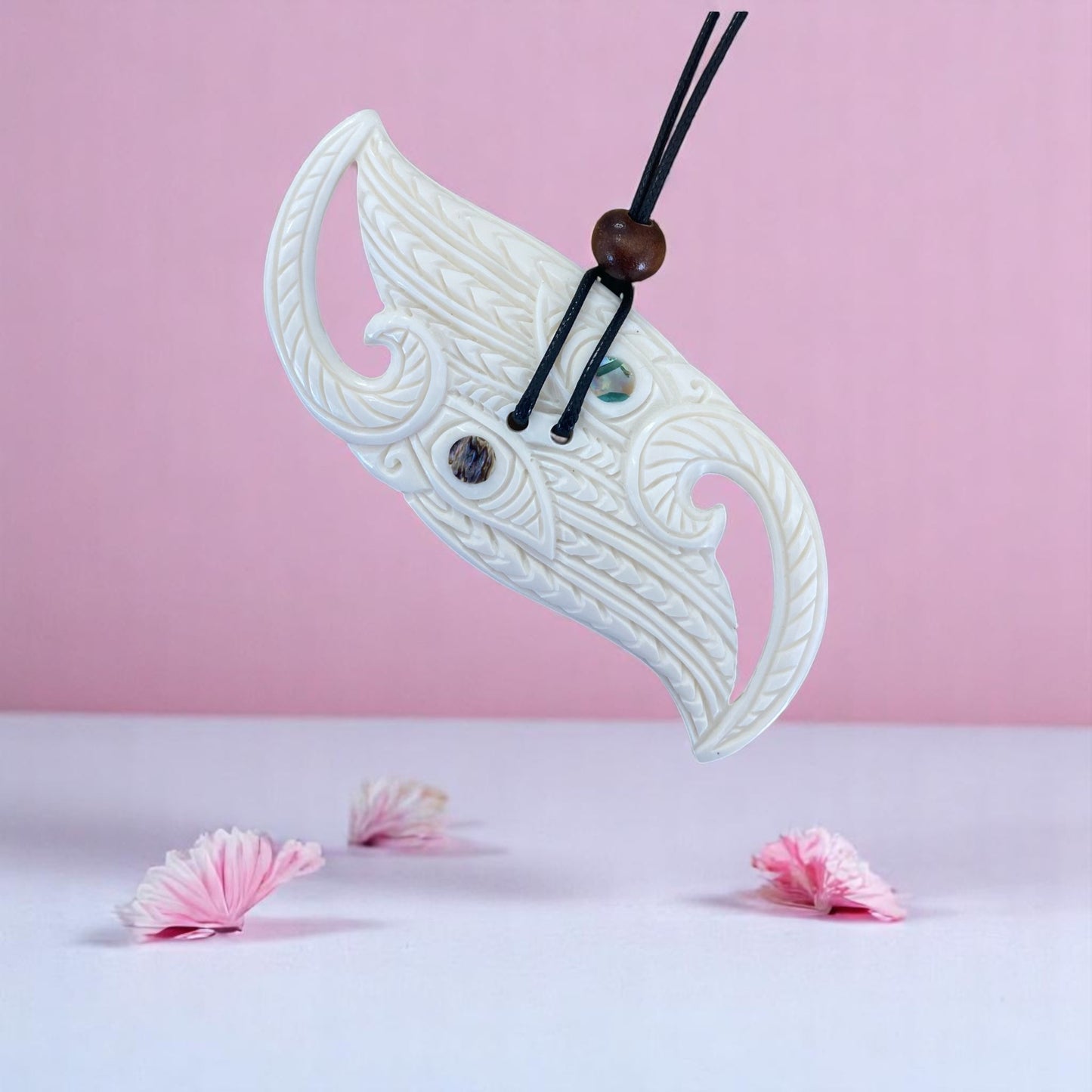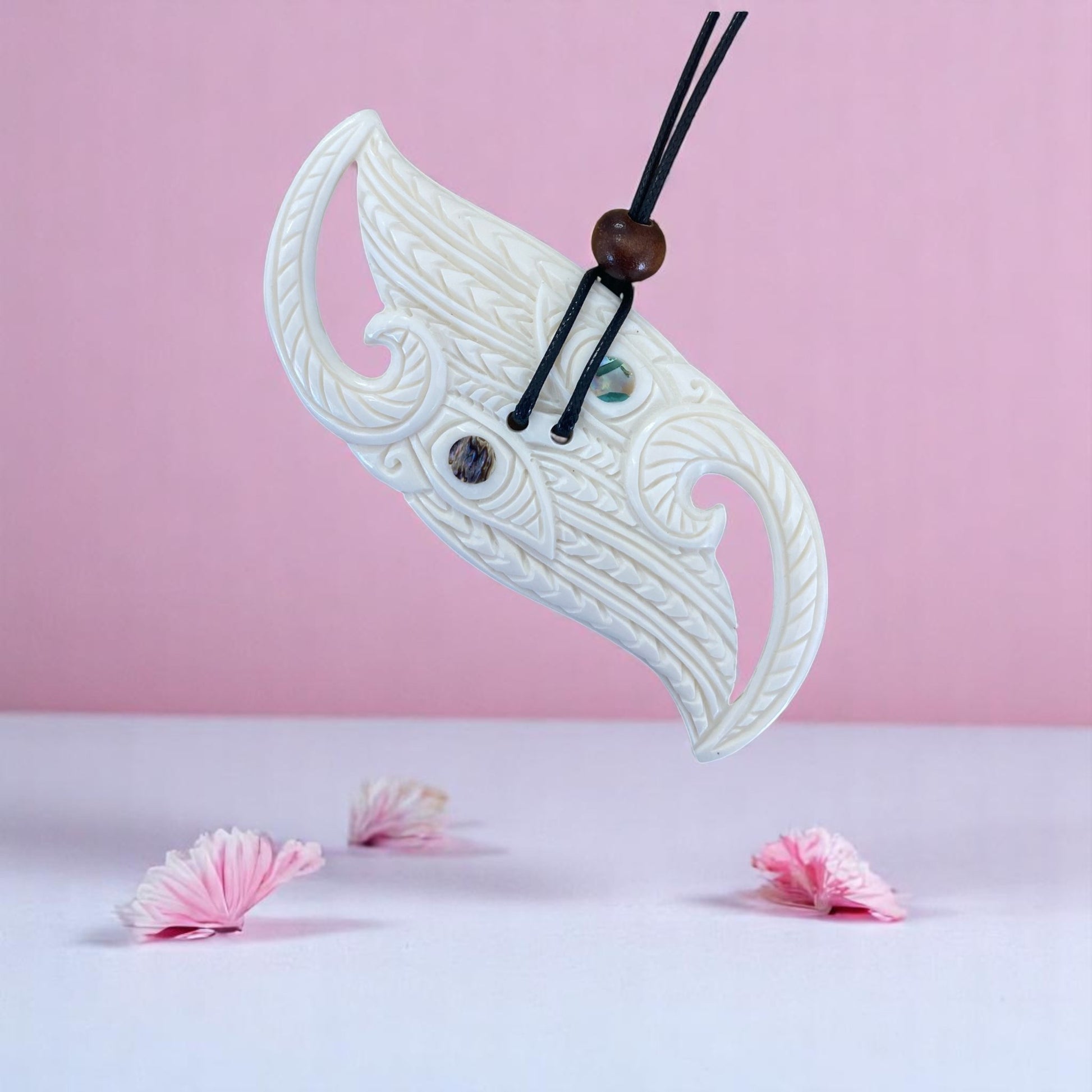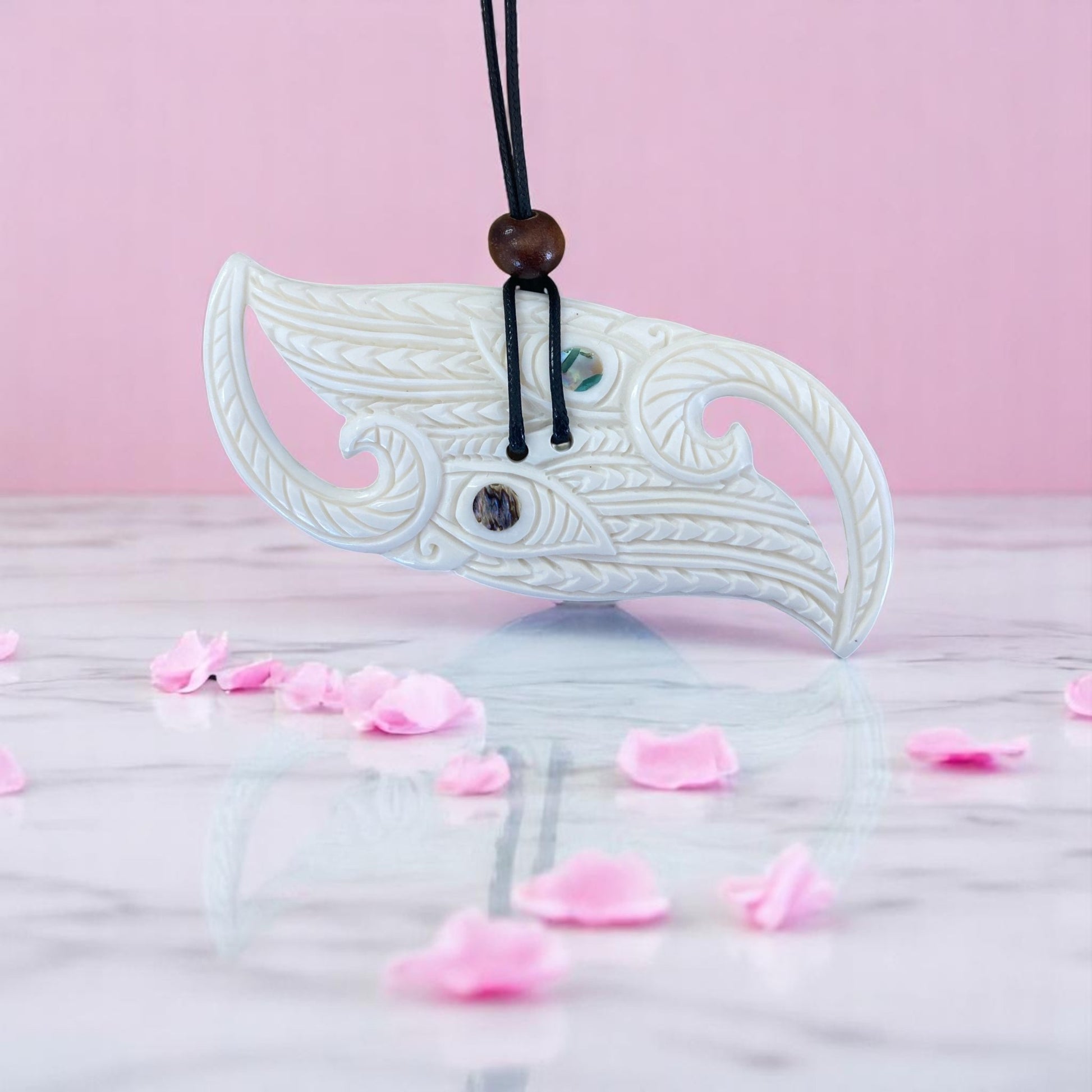Bone Porotiti (Māori Musical Instrument)
Bone Porotiti (Māori Musical Instrument)
Couldn't load pickup availability
The porotiti, is an intriguing Māori musical instrument.
This porotiti has the head of a manaia at each end. This double headed manaia symbolises guardianship and protection from the two sides of one's whakapapa, mother and father. It also has a cord threaded through two holes. Its gameplay involves looping the cord around the hands and giving it a gentle twirl to initiate the spinning motion. Through the application of alternating pressure and subsequent relaxation of the cord, the disc untwines, producing a soothing humming sound. Further, by delicately blowing on its vanes, it awakens, generating its own melodious tunes.
This porotiti is crafted from genuine beef bone right here in NZ and exemplifies exquisite beauty. Its double-sided carving serves to amplify the volume of its enchanting melodies. As a pendant, it can be worn gracefully around the neck.
Size (mm): 80 H x 35 W.
It is supplied in a woven flax-like kete (as in photo)
Please note that each piece is individually carved, thus slight variations may occur, enhancing its unique character.
Meaning of this Porotiti
“There is a manaia head on either side, the Manaia is a guardian, in between the manaia we have filled the area with a variant of the Rauponga pattern.
The Manaia represents a guardian spirit or protector. It is often depicted with the head of a bird, the body of a human, and the tail of a fish. Having a Manaia head on either side signifies protection from evil, and in this case illness or sickness.
The Rauponga pattern is a traditional Maori design that consists of a series of curved and interconnected lines. It is often used to symbolise genealogy, ancestry, and the interconnectedness of generations.
Bringing these two elements together carries a deeper cultural meaning. It suggests a connection between protection (Manaia) and heritage (Rauponga). The Manaia, as a guardian, is warding off illness, which can be seen as a way of safeguarding the lineage and ensuring the well-being of future generations. The Rauponga pattern, with its representation of genealogy, reinforces the idea of a strong connection between the past, present, and future.
Overall, this representation conveys a sense of cultural identity, protection and the importance of ancestral heritage within Māori culture. It's a meaningful representation that reflects the values and beliefs of the Māori people.”
Using the Porotiti
The Porotiti is a musical instrument that was traditionally used in healing. The instrument is known by several names including kororohu, purorohu, waiora, takawaiori, and tarari. Customary uses included playing the porotiti over the congested chest of a child, to help improve the mobility for older adults and over the stomachs of pregnant women. Tohunga often blew on the porotiti and chanted karakia as they were spinning. Traditional porotiti were made from wood with two holes pierced near the centre. A cord was threaded through these holes and the ends tied together. The thumbs of the user were inserted through the inner loop cord and the instrument spun by pulling the ropes outward.
The porotiti is considered to be a healing disc, played above sleeping babies to break up mucus in blocked noses and ears.
Share




